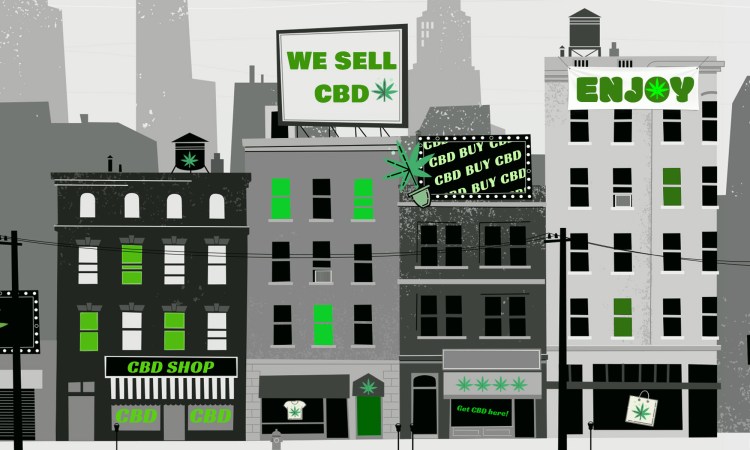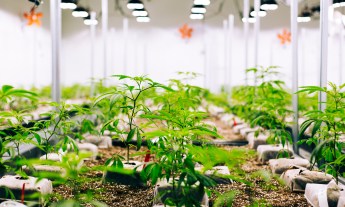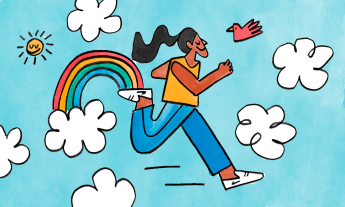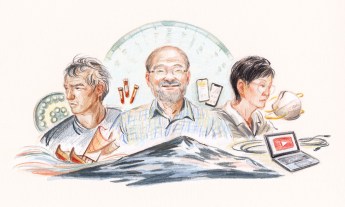
Is CBD a cure-all — or snake oil? Jeffrey Chen, executive director of the UCLA Cannabis Research Initiative, explains the science behind the cannabis product.
CBD gummies. CBD shots in your latte. CBD dog biscuits. From spas to drug stores, supermarkets to cafes, wherever you go in the US today, you’re likely to see products infused with CBD. There are cosmetics, vape pens, pills and, of course, the extract itself; there are even CBD-containing sexual lubricants for women which aim to reduce pelvic pain or enhance sensation. CBD has been hailed by some users as having cured their pain, anxiety, insomnia, depression or seizures, and it’s been touted by advertisers as a supplement that can treat all of the above and combat aging and chronic disease.
As Executive Director of the UCLA Cannabis Research Initiative, I’m dedicated to unearthing the scientific truth — the good and the bad — behind cannabis and CBD. My interest was sparked in 2014 when I was a medical student at UCLA, and I discovered a parent successfully treating her child’s severe epilepsy with CBD. I was surprised and intrigued. Despite California legalizing medical cannabis in 1996, we weren’t taught anything about cannabis or CBD in med school. I did research and found other families and children like Charlotte Figi reporting success with CBD, and I knew it was something that needed to be investigated. I established Cannabis Research Initiative in the fall of 2017, and today we have more than 40 faculty members across 18 departments and 8 schools at UCLA working on cannabis research, education and patient-care projects.
So what exactly is CBD and where does it come from? CBD is short for cannabidiol, one of the compounds in the cannabinoid family which, in nature, is found only in the cannabis plant (its official scientific name is Cannabis sativa l.). THC — short for tetrahydrocannabinoid — is the other highly abundant cannabinoid present in cannabis that’s used today. THC and CBD exert their effects in part by mimicking or boosting levels of endocannabinoids, chemical compounds that are naturally produced by humans and found throughout our bodies. Endocannabinoids play an important role in regulating mood, memory, appetite, stress, sleep, metabolism, immune function, pain sensation, and reproduction.
Despite the fact that they’re both cannabinoids found only in the cannabis plant, THC and CBD are polar opposites in many ways. THC is intoxicating and responsible for the “high” of cannabis, but CBD has no such effect. THC is addictive; CBD is not addictive and even appears to have some anti-addictive effects against compounds like opioids. While THC stimulates the human appetite, CBD does not. There are areas where they overlap — in preliminary animal studies, THC and CBD exhibit some similar effects, including pain-relieving and anti-inflammatory properties and anti-oxidant and neuroprotective effects. In some early research, they’ve even shown the ability to inhibit the growth of cancer cells, but years of rigorous studies need to be conducted before we’ll know whether they have the same impact on humans.
Even though humans have been using cannabis for thousands of years, the products available today are not the cannabis that has traditionally been consumed. After cannabis was prohibited at the federal level in 1970 by the US Controlled Substances Act, illicit growers were incentivized to breed strains that had higher amounts of THC, so they could increase their profits without needing larger growing spaces. What they didn’t know was that by driving up THC content, they were dramatically reducing the CBD content. In 1995, after decades of surreptitious breeding, the ratio of THC to CBD was ~15:1, and by 2014 the ratio had jumped to ~80:1 as CBD content further plummeted.
Due to decades of research restrictions in the US and growers’ focus on THC, there are very few human studies that look at CBD and its effects. The strongest evidence we have is that CBD can reduce the frequency of seizures in certain rare pediatric disorders — so much that a CBD-based drug called Epidiolex was FDA-approved in 2018 for this purpose. There is also preliminary human data from small clinical trials with dozens of subjects that suggests CBD may have the potential to be used for conditions like anxiety, schizophrenia, opioid addiction, and Parkinson’s disease. But please note that the participants in these studies generally received several hundreds of milligrams of CBD a day, meaning the 5mg to 25mg of CBD per serving in popular CBD products may likely be inadequate. And even if you took dozens of servings to reach the dosage used in these clinical trials, there is still no guarantee of benefit because of how preliminary these findings are.
But while there is a lack of concrete and conclusive evidence about CBD’s effects, there is considerable hope. Recent legislative changes around hemp and CBD in the US and across the world have enabled numerous human clinical trials to begin, investigating the use of CBD for conditions such as autism, chronic pain, mood disorders, alcohol use disorder, Crohn’s disease, graft-versus-host-disease, arthritis and cancer- and cancer-treatment-related side effects such as nausea, vomiting and pain. The results of these studies should become available over the next five years.
Furthermore, in an effort to protect consumers, the FDA has announced that it will soon issue and enforce regulations on all CBD products. Buyers should beware because the products being sold today may contain contaminants or have inaccurately labelled CBD content — due to the deluge of CBD products on the market, government agencies haven’t been able to react quickly enough so there is currently no regulation in the US whatsoever on CBD products.
While CBD appears to be generally safe, it still has side effects. In children suffering from severe epilepsy, high doses of CBD have caused reactions such as sleepiness, vomiting and diarrhea. However, we don’t know if this necessarily applies to adults using CBD because these children were very sick and on many medications, and the equivalent dose for an average 154-pound adult would be a whopping 1400 mg/day. And while CBD use in the short term (from weeks to months) has been shown to be safe, we have no data on what side effects might be present with chronic use (from months to years).
Right now, the most significant side effect of CBD we’ve seen is its interaction with other drugs. CBD impacts how the human liver breaks down other drugs, which means it can elevate the blood levels of other prescription medications that people are taking — and thus increase the risk of experiencing their side effects. And women who are pregnant or who are expecting to be should be aware of this: We don’t know if CBD is safe for the fetus during pregnancy.
So where does this leave us? Unfortunately, outside of certain rare pediatric seizure disorders, we scientists do not have solid data on whether CBD can truly help the conditions that consumers are flocking to it for — conditions like insomnia, depression and pain. And even if it did, we still need to figure out the right dose and delivery form. Plus, CBD is not without side effects. Here’s the advice that I give to my friends and family: If you’re using CBD (or thinking about using it), please research products and talk to your doctor so they can monitor you for side effects and interactions with any other drugs you take.
So is CBD a panacea or a placebo? The answer is: Neither. CBD is an under-investigated compound that has the potential to benefit many conditions. While it does have side effects, it appears as if it could be a safer alternative to highly addictive drugs such as opioids or benzodiazepines. And thanks to a recent surge in research, we’ll be learning a lot more about its capabilities and limits in the next five years.
Watch his TEDxPershingSq talk now:















